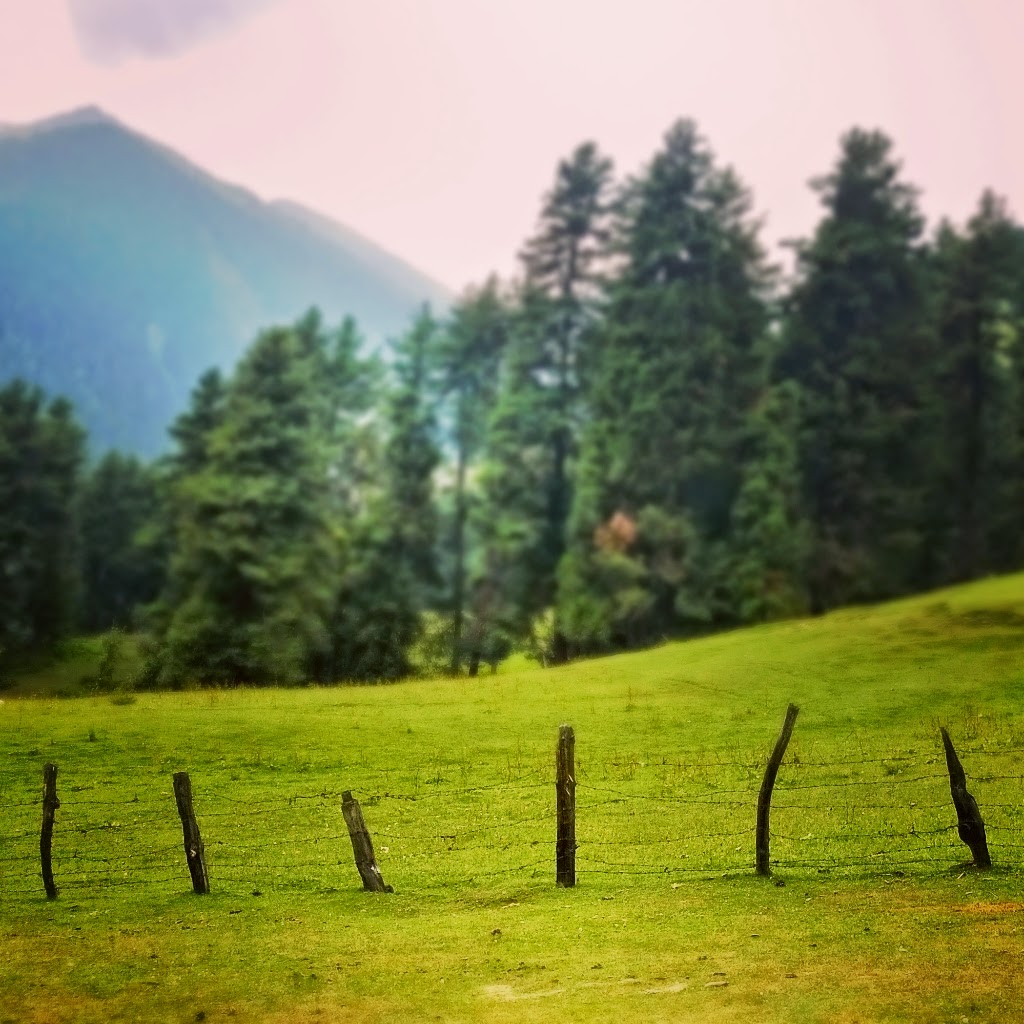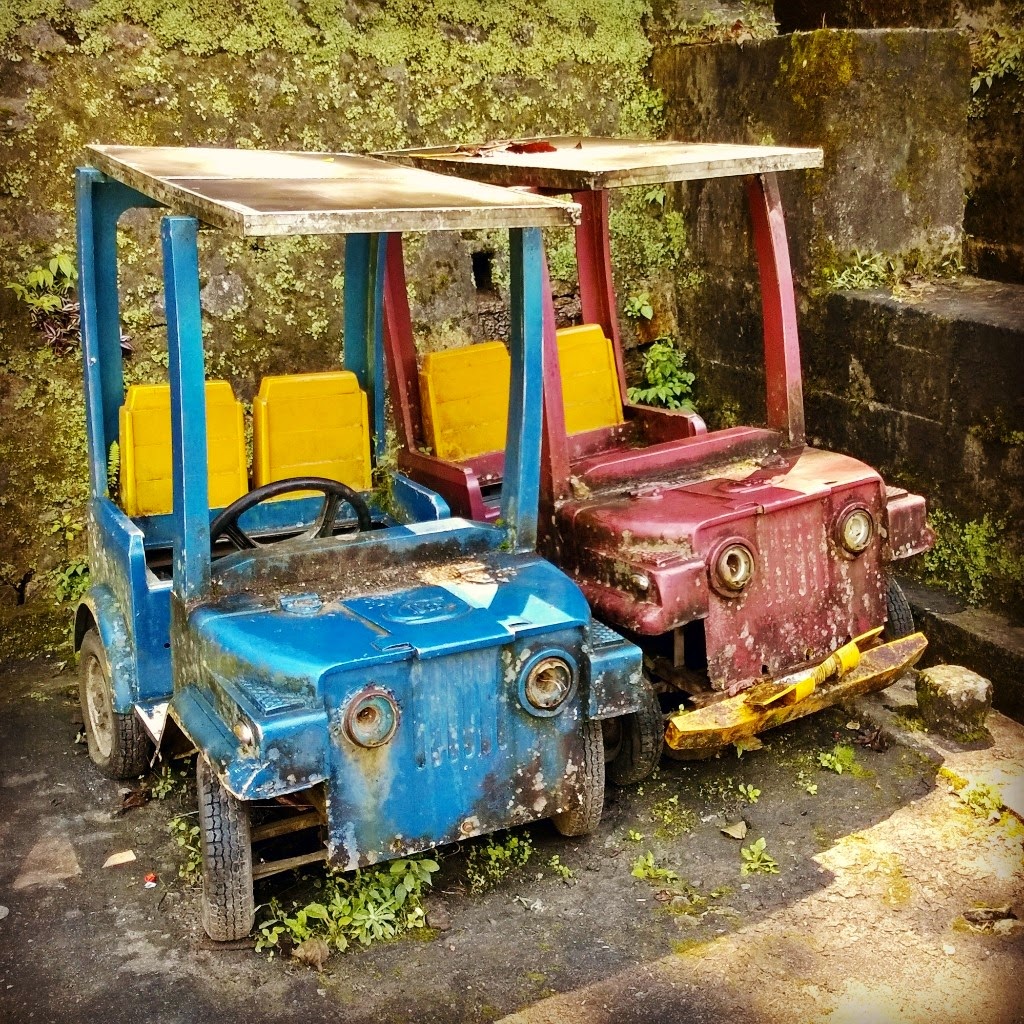In Lansdowne, the crickets drown out John Denver.
We sit outside in the gathering dusk, our ears attuned to the insects in the trees.
Swaty is quiet. She slouches in a plastic chair with her feet up on the parapet and a steady smile on her lips. As the strains of "Annie's Song" fade, she puts down an unread Haruki Murakami novel and picks up her phone to play a Don Williams number. The country singer's baritone fills the air, but the crickets prevail.
Lansdowne is a sleepy colonial-era hill station a few hundred kilometres from India's capital. Six of us are here for the weekend, escaping the everyday worries of city life in New Delhi and renewing decade-old friendships.
When not ensconced in our cosy wooden cottages, we stroll up and down meandering
mountain roads, staring into the wilderness, our incessant chatter interspersed
by moments of satisfied silence. A brown calf walks past, looking askance at this
motley group of humans. At Bhulla Tal, a man-made lake and tourist magnet, we embark
in our pedal boats with great enthusiasm. Only to tire and return to shore before
our allotted 20 minutes are up. A family of ducks mocks us. At the nearby
eatery, a box is filled to the brim with packets of Maggi instant noodles on sale.
Ban! What ban?We sit outside in the gathering dusk, our ears attuned to the insects in the trees.
Swaty is quiet. She slouches in a plastic chair with her feet up on the parapet and a steady smile on her lips. As the strains of "Annie's Song" fade, she puts down an unread Haruki Murakami novel and picks up her phone to play a Don Williams number. The country singer's baritone fills the air, but the crickets prevail.
Lansdowne is a sleepy colonial-era hill station a few hundred kilometres from India's capital. Six of us are here for the weekend, escaping the everyday worries of city life in New Delhi and renewing decade-old friendships.
Anima buys a packet of locally made chips, and makes a face as she bites into one. The six of us are lounging in the shadows of St. Mary's Church when the monkeys come. One, two, and then they multiply till a sea of brown blobs closes in on us. We move away in time but, in her haste, Anima leaves the chips behind. A monkey stumbles upon the spicy wafers. But he doesn't like them. A second primate gets his hands on the loot, and flings it aside. The monkeys retreat into the darkness, leaving us to ponder over a vital question - does anyone like these chips?
We stay at a government-run tourist centre, perched on a hill that overlooks Lansdowne, and any illusions of our seclusion are dispelled on the second day. Hordes of daytrippers visit the adjacent Tip-N-Top point for a glimpse of the Himalayas, and invariably traipse up the walkway outside our cottages. Honeymooning couples, restless children, pot-bellied men, high-heeled women, and bevies of giggly, pimply girls. They all pose on our porch, brazenly taking selfies as we stare them in the face, horrified at this invasion of our mountain retreat.
One of the girls wants to use our washroom; we reluctantly agree. But her companion riles up Swaty with an insolent remark about us owning the place. And Swaty, usually the epitome of sunshiny happiness, retorts that we do - at least for the weekend. When we walk down to the café, the girls are there. They notice us and break into fits of giggles. We ignore them, but their ponytailed ringleader -- in heels and a denim miniskirt -- has the last word. As they walk past us, she turns to her companions and says, "I hope you don't have to use the washroom."
To be honest, the chilli chicken and cottage cheese served at the café is so orange (thanks to dollops of added food colouring), that tourists may feel rather safe in the sanctuary of the washroom. My cottage is almost certainly meant to be a honeymoon suite; the artistic designs of our bathroom tiles are meant to echo the erotic sculptures of Khajuraho. My friends don’t see any resemblance and say I'm exaggerating.
The TV sets in the cottages do work, but only a few Hindi channels are on offer. Which meant that Upasana, controller of the TV remote during our stay, juggles between one or the other music channel and subjects us to trailers and songs from "Dil Dhadakne Do", "Hamari Adhuri Kahani", and lesser known Bollywood films of dubious origin. This goes on till Anima has had enough. Anima, introduced to the music of Yo Yo Honey Singh during this trip, rolls her eyes and nearly faints when apprised of the hit-churning rapper's status as Bollywood's next A.R. Rahman.
We stay up at night, playing Bluff - a popular card game of deception. I struggle to make sense of the game, invariably finishing last each time, but luck favours me in the final game. I raise my arms in triumph, gloating as if I've just won Wimbledon, and my friends collapse in a heap of merriment.
A dull throbbing in my head, which had manifested itself in the evening, had by now mutated into the frenzied tom-tomming of the African jungle. I bid my friends adieu and went to bed. My roommate Sumit, a stoic chap of the first order, endured my snoring all night. Unverifiable reports say my snores were audible outside the cottage. Apologies again, Sumit.
Sunandita, our ever-dependable guiding light, takes charge of toting up our bills the next morning, and ensures we are bathed and ready for the trip back to New Delhi. As the clock strikes 8 a.m., the deadline insisted upon by our driver, we park ourselves and our luggage next to the car. But where is the driver? Several frantic and unanswered phone calls later, we spot him walking towards us, freshly showered and clad in a towel. We eventually leave a half-hour late, taking in the sights and sounds of Lansdowne one last time.



























































